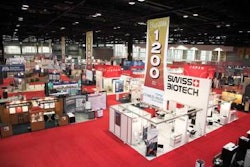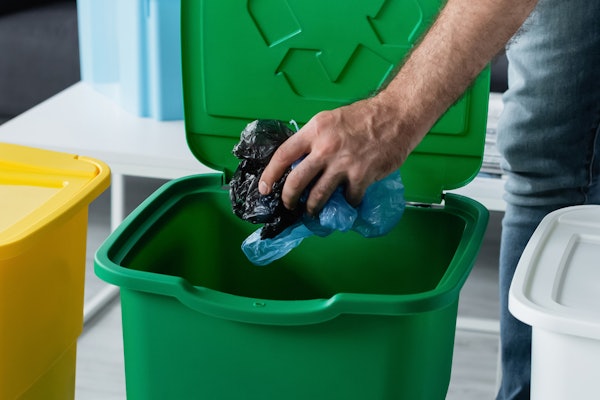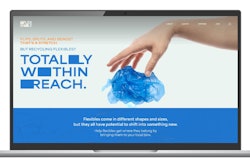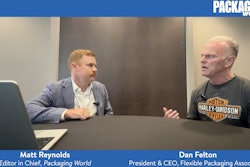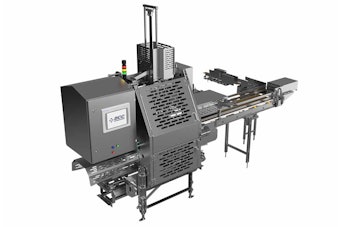The use of combination products to improve patient outcomes appears to be on the verge of unprecedented growth in the healthcare arena. With their life-saving potential, it’s understandable that combination products have become a sizzling-hot topic at recent healthcare packaging-related trade shows.
At www.fda.gov/oc/combination/definition.html, the U.S. Food and Drug Administration provides the following four combination product descriptions, as defined in 21 CFR§3.2(e):
1. A product comprising two or more regulated components, i.e., drug/device, biologic/device, drug/biologic, or drug/device/biologic, that are physically, chemically, or otherwise combined or mixed and produced as a single entity.
2. Two or more separate products packaged together in a single package or as a unit and comprising drug and device products, device and biological products, or biological and drug products.
3. A drug, device, or biological product packaged separately that according to its investigational plan or proposed labeling is intended for use only with an approved individually specified drug, device, or biological product where both are required to achieve the intended use, dosage form, strength, route of administration, or significant change in dose.
4. Any investigational drug, device, or biological product packaged separately that according to its proposed labeling is for use only with another individually specified investigational drug, device, or biological product where both are required to achieve the intended use, indication, or effect.
COMBINATION PRODUCTS PACK POTENTIAL
Technological advances in drugs, medical devices, and biologic-based products continue to lead to the development of products aimed at improving patient outcomes and extending human life. Marrying two or more of these healthcare products into a combination product, such as a drug-eluting stent, demonstrates such patient benefits. In this article, several industry authorities share their insights regarding the impact combination products may have on packaging.
Office of Combination Products
The FDA established the Office of Combination Products (OCP) in late 2002, as required by the Medical Device User Fee and Modernization Act (MDUFMA) of 2002. The MDUFMA Act, says the FDA, gives the OCP “broad responsibilities covering the regulatory lifecycle of combination products. However, the primary regulatory responsibilities for, and oversight of, specific combination products will remain in one of three product centers—the Center for Drug Evaluation and Research (CDER), the Center for Biologics Evaluation and Research (CBER), or the Center for Devices and Radiological Health (CDRH)—to which they are assigned.”
Combination product manufacturers can learn which of these three “lead centers” its product best fits by contacting the FDA and informally determining which center represents the best route, based on the primary mode of action (PMOA) of the product. The more formal process is to complete a Request for Designation (RFD). For details on how to write a request for designation, visit www.fda.gov/oc/combination/howtowrite.html.
New packaging requirements
Hal Miller, industry consultant and president of PACE Solutions LLC, offers the following advice: “Regardless of which FDA Center (CDRH or CDER) has the lead responsibility, the medical device packager must comply with a whole new set of packaging requirements and testing.
“Is the container and closure system suitable for use with the drug?” he asks. “This addresses moisture gain or loss in the package, evaluating extractables and leachables from and to the package, providing full chemical composition of the materials via Drug Master Files (DMF), and a completely different set of product stability requirements. All these requirements may be found in CBER Guidance for Container Closure Systems for Packaging Human Drugs and Biologics, CDER Guidance for Stability Testing of Drug Substances and Drug Products, and USP 661,” a characterization test on plastics.
Miller notes, “Additional drug product packaging requirements involve batch-to-batch uniformity of materials to ensure product safety and efficacy. Typically, stability testing on three different batches of packaging materials is performed.”
Demystifying biologics
It’s easy to understand that a hip replacement product is a medical device, or that insulin is a drug, but what exactly is a biologic? “There are a lot of different types of biologics,” says Mark Kramer, director of the FDA’s OCP. A visit to CBER’s online resource, www.fda.gov/
cber/faq.html, breaks them down into several categories, including allergenics, blood, devices, gene therapy, human tissues and cellular products, vaccines, and xenotransplantation products (those that use live animal cells, tissues, or organs to treat human diseases).
“In contrast to most drugs that are chemically synthesized and their structure is known, most biologics are complex mixtures that are not easily identified or characterized,” explains copy on the CBER site. “Biological products tend to be heat-sensitive and susceptible to microbial contamination. Therefore, it is necessary to use aseptic principles from initial manufacturing steps, which is also in contrast to most conventional drugs.
“Biologic products often represent the cutting-edge of biomedical research and, in time, may offer the most effective means to treat a variety of medical illnesses and conditions that currently have no other treatments available,” according to the Web site.
Medical Device Consultants Inc.’s (MDCI) Ph.D. and executive vice president, James Wason, says biologic-based products pose packaging challenges. “Biologics tend to be more time-sensitive in terms of product degredation, so you have more requirements, such as sterility. The requirements for biologics are much higher in general than devices in many cases because you’ve got to protect a more delicate physical product.”
“Biologics can be blood or tissue,” notes Carolyn Jones, associate vice president in technology and regulatory affairs for Washington, DC-based medical device association AdvaMed. “They tend to be those things that are taken from the human body or a biological entity.”
COMBINATION PRODUCT PACKAGING CONCERNS
Combining a medical device with a pharmaceutical to create a drug delivery device is a great opportunity for both the device company and the pharmaceutical firm. Pharmaceutical companies capitalize on the chance to take less profitable off-patent drugs and reintroduce them in a new way. Often the smaller, medical device firm has to turn to its big pharma partners for help with funding, Food and Drug Administration (FDA) compliance, and so on.
Not only is the road to launching a new product longer, tougher, and more expensive, but the actual application of the drug onto the device remains a difficult proposition at full production speeds. Virtual design programs are helping medical device firms conceive new products much more efficiently. Doctors call for more devices to be MRI-compatible, often dictating a change in materials.
Packaging has to tackle the difficulties associated with delivering a sterile device that now includes a biologic. New materials with maximum barrier properties are often necessary. One wound dressing supplier went from dry to wet dressings. The biologic in the dressing deteriorated the adhesive on the dressing backing. When the backing adhesive was changed, the product had to switch from gamma to ethylene-oxide sterilization, calling for a change in the packaging material.
This is not the formula for winning the race for “speed to market.” The biggest challenge for packaging is moving up from the end of the process to the beginning, at the clinical trials or earlier stage.
—Jim Chrzan, publisher, Healthcare Packaging.
Adding complexity to packaging
Michigan State University Ph.D. and assistant professor Laura Bix says, “by their very design, combination products add complexity to the packaging system,” she says. “Products like insulin injector pens, metered dose inhalers, transdermal patches, and prefilled syringes are combination products that add convenience and save the end user time and/or effort. The device itself becomes a package for the drug product, and it complicates things like shelf life, efficacy, package testing, labeling, and regulation. Device manufacturers that are using the device as a drug delivery system or a package for the drug now have to consider issues like migration, sorption, permeation, and drug stability. These are issues that were likely not as important to them when they packaged a lone device.”
Bix adds, “Combination products also include items that are packed together for the convenience of the user. One such example is a kit consisting of multiple surgical instruments packaged with drapes and drugs, such as lidocaine. Again, it’s more convenience for the end user, but adds complexity for the device manufacturer and packager, who must ensure that the kit be efficiently, thoroughly and correctly packed, sterilized, and distributed.”
Sterilization challenges
She says that sterilization also becomes more complicated with combination products. “Not only must the manufacturer be certain that all components within the kit reach a sterile state, but all materials must be compatible with the sterilization process. In many cases, the package design is expected to facilitate sterilization. For example, devices that are sterilized using EtO must be contained in packages that incorporate a porous membrane. This membrane allows the EtO gas to penetrate (and evacuate) the package during the sterilization process.
“Packaging design must also be carefully considered if the device manufacturer employs gamma irradiation to sterilize its products,” Bix notes. “When utilizing irradiation for sterilization, both product and packaging materials must be accounted for so that they are not adversely impacted by the sterilization process; an inappropriate material may become brittle or discolored after sterilization. For both gamma irradiation and EtO, designers must also consider the package geometry and size so that sterilization cycle times are optimized.”
PACE’s Miller says terminal (in-the-package) sterilization “will most certainly be affected” by combination products. “Aseptic processing is an alternative, but it’s expensive. Some products may require a modified atmosphere [process], such as a gas flush or vacuum packaging. This equipment is not new but may be new to the combination-products packager.”
He says, “Terminal sterilization is the preferred method. However, with the employment of large-molecule proteins, live cells, and drug chemistry on devices, nonstandard sterilization cycles may need to be considered.” He says that “low-dose irradiation and low-temperature/low-EtO concentration processes may be the answer. However, in order to attain a sterility assurance level of 10-6, very low bioburdens may be required. If so, this could significantly affect the way a product is manufactured, handled, and packaged.”
PHARMAMEDDEVICE CONFERENCE AND EXHIBITION TO LAUNCH
To help life sciences companies accelerate the innovation of next-generation combination products, Reed Life Sciences (www.pharmameddevice.com) will launch PharmaMedDevice. It’s uncertain how focused it will be on packaging, but the inaugural event will be co-located with Interphex in New York, April 23-25, 2007. In its release announcing PharmaMedDevice, Reed valued the global market for combinations of two or more regulated components at nearly $6 billion in 2004, with growth of 14% per year through 2010.
“As medical devices and pharmaceuticals continue to merge, the medical community is looking to combination products to enter, develop, and grow new markets,” says Christine Ford, event director. “These innovative products also provide manufacturers with an opportunity for extended patent protection.”
The event will also include a conference program aimed at providing life sciences companies with a road map for speeding new combination products—drugs, medical devices, and or biologics through physical or chemical means—to the market and extending product lifecycles. The conference will also address personalized medicine and bionanotechnology. Companies interested in submitting proposals for speaking opportunities may call Christina Giuliano at 203/840-6214.
An online Call For Papers submission form is available at www.pharmameddevice.com/cfp.
More packaging complications
AdvaMed’s Jones points out that “combination products pose a challenge in FDA regulations. I attended the FDA Science Forum [in April] and they had a session on combination products that highlighted the fact that companies have to change their manufacturing processes often times to deal with these products. They’re dealing with new materials that they hadn’t used before. We’ve had stents for some time,” she notes, “but when you have a drug-eluting stent, how is that drug going to interact with the materials used to make the stent? Packaging materials are involved in some instances because some of these products need to be sterile, so how does that have an impact? Previously, maybe you put a device in a package and sterilized the whole thing. Maybe now you’re not able to do that because it has a drug.”
When it comes to packaging combination products, Miller says, “The biggest challenge is the package’s ability to render the product (drug) safe and effective. Medical device packaging has the requirements to protect the product from damage, sterilize the product, and maintain sterility until time of use. Pharmaceutical packaging, on the other hand, has the main function to keep the drug safe and effective. [These require] two totally different mind frames and focus. Medical device packagers need to understand the requirements of drug packaging.”
From a materials perspective, Miller believes “traditional materials most likely are acceptable. However, until tested and evaluated with the drug’s safety and effectiveness, one cannot be sure. The package of choice for some products seems to be a foil pouch with a Tyvek header,” he says, referring to the protective material from DuPont (www.dupont.com). This package style is typically employed for EtO terminal sterilization and has been used with body-absorbable products for some time. This assumes the product can be terminally EtO sterilized.
“For devices that require semi-rigid trays,” he adds, “Aclar®/PETG-thermoformed trays may be of choice for a moisture barrier, along with foil or barrier film lidding.” Aclar is a fluoropolymer film from Honeywell (www.honeywell.com).
Product growth anticipated
Will the need for packaging increase along with the growth of combination healthcare products? “It’s always difficult to say how quickly this area is going to grow because a lot of this is not only dependent on the FDA expertise, review, and how expeditiously they get these out, but it’s also tempered by how these will be reimbursed by Medicaid, Medicare, and so on,” Jones says. “I do believe that there will be more combination products in the future.”
“We didn’t have a means to record or document the numbers of combination products because submissions weren’t broken out by whether they were combination products or not until a couple of years ago,” says OCP director Kramer. “Now with a couple of years of data, we are seeing the numbers increasing, which confirms our anecdotal beliefs.” He notes that data for the fiscal year 2005 will likely show a 10% to 11% increase in combination product submissions from the 251 entered the previous year.



